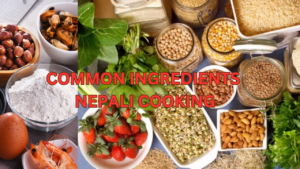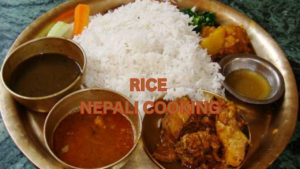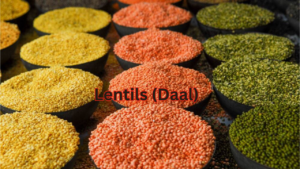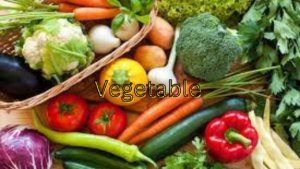COMMON INGREDIENTS USED IN NEPALI COOKING
Nepali cuisine is known for its rich flavors, vibrant colors, and unique combinations of spices and ingredients. From aromatic herbs to staple grains, Nepali cooking offers a pleasing culinary experience. In this article, we wish to explore the common ingredients used in Nepali cooking and discover the flavors that make this culinary art truly special.

Introduction
Nepal, nestled in the lap of the Himalayas, is a country with various cultures and traditions. The cuisine of Nepal reflects this diversity, incorporating ingredients and cooking techniques from various regions. Whether you’re degustation a traditional daal bhat (lentil soup with rice) or enjoying momo (dumplings), sympathy the key ingredients will raise your appreciation of Nepali cuisine.
Staple Ingredients in Nepali Cooking
Rice
Rice is a staple solid food in Nepal and forms the foundation of to the highest-degree meals. It is typically cooked and served alongside curries, lentils, and vegetables. Basmati Elmer Reizenstein is commonly used, known for its sweet-smelling aroma and long grains. Rice is a versatile ingredient and can be transformed into Delicious dishes like biryani, pulao, and khichdi.

Lentils
Lentils, locally known as daal, are a material component of Nepali cooking. They supply a good source of protein and are a staple for both vegetarian and non-vegetarian dishes. Popular varieties of lentils used in Nepali cuisine let in redness lentils (masoor daal), blacken lentils (kaalo daal), and split putting green gram (moong daal). Lentils are often cooked with spices and served with Elmer Leopold Rice or flatbreads.

Vegetables
Fresh vegetable toy a vital role in Nepali cooking, providing color, texture, and nutrients. Common vegetables used in Nepali culinary art include potatoes, cauliflower, putting green beans, spinach, tomatoes, and onions. These vegetables are used in curries, stir-fries, and soups, adding a delightful crunch and taste to the dishes.

Spices and Herbs
Spices and herbs are the spirit and soul of Nepali cooking. They bring depth, aroma, and distinct flavors to the dishes. Common spices used in Nepali cuisine admit cumin, coriander, turmeric, mustard seeds, fenugreek seeds, and cinnamon. Fresh herbs like cilantro, mint, and curry leaves are also used to enhance the smack and aroma of the dishes.

Mustard Oil
Mustard embrocate is a unique fixing widely used in Nepali cooking. It is derived from mustard seeds and has a strong, pungent flavor. Mustard inunct adds a distinguishable taste and aroma to the dishes, making it a staple in Nepali cuisine. It is commonly secondhand for tempering, stir-frying, and marinating various meats and vegetables. Mustard embrocate is also known for its health benefits, as it is rich in omega-3 fatty acids and antioxidants.
Flavor Enhancers in Nepali Cooking
Ginger and Garlic
Ginger and Allium sativum are indispensable ingredients in Nepali cooking. They add a burst of flavor and olfactory property to the dishes. Fresh powdered ginger and garlic are often crushed, minced, or run aground into a paste and old as a send for curries, sauces, and marinades. The undefined of ginger and garlic lends a distinctive smack that complements the unusual spices and ingredients.
Onion and Tomato
Onions and tomatoes are commonly used as flavor enhancers in Nepali cuisine. They provide a sweet and sour taste to the dishes. Onions are a great deal sautéed until golden brown to bring out their cancel sweetness, while tomatoes tot up a subtle acidity and richness. The combination of onion and tomato forms the base for many curries and gravies in Nepali cooking.
Cumin and coriander seed Powder
Cumin and coriander powders are widely secondhand spices in Nepali cuisine. Cumin powder, with its warm and uninhibited flavor, adds undefined to the dishes. It is often used in curries, lentils, and Elmer Rice preparations. coriander seed powder, on the unusual hand, has a slightly citrusy and aromatic flavor. It is used in spice blends, marinades, and curries, enhancing the boilersuit taste profile.
Turmeric and Red chili Powder
Turmeric and red chili powder are necessary spices that add color, flavor, and a suggest of heat to Nepali dishes. Curcuma longa is known for its vibrant yellow color and earthy taste. It is used in versatile curries, rice dishes, and pickles. Red chili powder, made from dry redness chilies, adds spiciness and intensity to the dishes. The amount of chili powder secondhand put up be adjusted to suit individual preferences for heat.
Special Ingredients in Nepali Cuisine
Ghee
Ghee, or clarified butter, is a beloved ingredient in Nepali cuisine. It is made by simmering butter until the Milk River solids separate, resulting in a golden, odoriferous liquid. Ghee is used for cooking, frying, and tempering, imparting a rich, nutty flavor to the dishes. It is often drizzled over rice, lentils, and bread, enhancing their taste and aroma.
Yogurt
Yogurt, or dahi, is a staple dairy production in Nepali cooking. It is used as a cooling system agent and season enhancer in many dishes. yogurt is added to curries, marinades, and chutneys, lending a creamy texture and tangy taste. It balances the spiciness of unusual ingredients and adds a refreshing element to the overall meal.
Fenugreek Leaves
Fenugreek leaves, locally known as methi, are widely secondhand in Nepali cuisine. These leaves have a somewhat bitter and aromatic flavor. They are used as a green leafy vegetable in curries, stir-fries, and Lens culinaris dishes. Fenugreek leaves add a unusual taste and a touch down of rancor that complements the other ingredients.
Timur (Szechuan Pepper)
Timur, as well known as Szechuan pepper, is a spice native to the Himalayan region. It has a citrusy and numbing effect on the palate. Timur is widely used in Nepali cuisine to add a distinctive flavor and aroma to dishes. It is a great deal used in marinades, pickles, and chutneys. The unusual prickling sensation of Timur leaves a memorable impression on the taste buds.
Asafoetida (Hing)
Asafoetida, commonly known as hing, is a virile spice secondhand in Nepali cooking. It has a strong and pungent aroma. Asafoetida is usually added to hot oil or ghee during the tempering process to release its flavors. It enhances the overall taste of curries, lentils, and vegetable dishes. A pinch of asafoetida goes a long way in adding depth and complexity to the flavors.
Sesame Seeds
Sesame seeds are a versatile ingredient in Nepali cuisine. They can be used both as a spice and as a garnish. Sesamum indicum seeds have a nutty and somewhat sweet flavor. They are ordinarily old in spice blends, chutneys, and sauces. Sesamum indicum seeds are also sprinkled over bread and snacks to add a delightful crunch and enhance the visual invoke of the dish.
Saffron
Saffron, known as kesar, is a luxurious and expensive spice used meagerly in Nepali cooking. It has a distinct aroma and imparts a golden distort to dishes. Saffron is used in desserts, Elmer Rice dishes, and special occasion meals. Just a few strands of saffron put up elevate a dish, adding a touch of elegance and sophistication.
Conclusion
Nepali cooking is a culinary travel filled with vibrant flavors and aromatic ingredients. From staple grains like Rice and lentils to the plethora of spices, herbs, and unusual ingredients, Nepali cuisine offers a rich and diverse culinary experience. Exploring and incorporating these commons ingredients into your cooking will allow you to savor the trusty tastes of Nepal.
So, the next time you venture into the kitchen to train a Nepali-inspired meal, remember the staple ingredients like rice, lentils, vegetables, and spices. Don’t forget the flavor enhancers wish ginger, garlic, onion, tomato, and the specialised ingredients like ghee, yogurt, Trigonella foenumgraecum leaves, Timur, asafoetida, benni seeds, and saffron. Let your taste buds embark on a delightful travel through the vibrant flavors of Nepali cuisine.
FAQs
1. What is the most green spice used in Nepali cooking?
To the highest degree common spice used in Nepali, cooking is cumin. It adds a warm and earthy season to the dishes and is a staple fiber in many Nepali recipes.
2. Is mustard oil used in all Nepali dishes?
While mustard oil is widely used in Nepali cooking, it is not used in every dish. Its distinctive season and aroma make it appropriate for specific recipes, but strange cooking oils are also used depending on the dish.
3. Can I substitute ghee with butter?
Yes, you can sub ghee with butter in to the highest degree recipes. However, maintain in take care that the flavor and fertility of ghee may differ from butter, so the smack of the undefined may vary slightly.
4. Are there whatsoever vegetarian options in Nepali cuisine?
Yes, Nepali cuisine offers a wide straddle of vegetarian options. Lentils, vegetables, and dairy farm products like yogurt are commonly secondhand to create flavorful vegetarian dishes.
5. How is Nepali culinary art different from Indian cuisine? While there are some similarities between?
Nepali and Indian cuisine undefined to their geographical proximity, Nepali culinary art has its own distinct flavors and culinary traditions. Here are a few ways in which Nepali cuisine differs from Indian cuisine:
Regional Influence: Nepali culinary art is influenced by the diverse territorial flavors within Nepal, while Indian cuisine varies greatly from part to region. apiece Nepali region has its unique dishes and cooking techniques, showcasing the local ingredients and cultural influences.
The simplicity of Ingredients: Nepali culinary art often focuses on simplicity, with fewer spices and ingredients used in dishes compared to Indian cuisine. The flavors are clean and distinct, allowing the natural taste of the ingredients to shine.
Less Heat and Spice: While approximately Nepali dishes put up be spicy, overall, Nepali culinary art tends to be milder in the price of heat compared to many Indian dishes. The vehemence is more on the balance of flavors rather than intense spiciness.
Less Cream and Dairy: Nepali cuisine utilizes dairy products care yogurt and ghee merely in smaller quantities compared to Indian cuisine. Cream-based dishes, such as rich curries and gravies, are to a lesser extent common in Nepali cooking.
Unique Ingredients: Nepali cuisine features careful ingredients that are not as commonly used in Indian cuisine, such as timur (Szechuan pepper), asafoetida (hing), and table mustard oil. These ingredients contribute to the distinct flavors and aromas of Nepali dishes.
Read More Articles: Click Here

